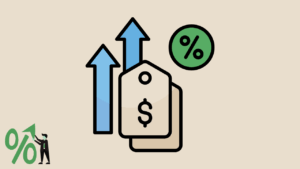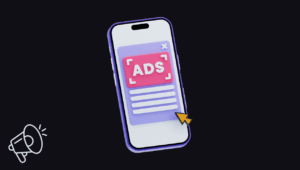Backlinks still move rankings, but guessing your way to links no longer works. Today the winners treat link building as a data problem and a creative problem at the same time. AI helps you discover the right prospects, predict which pages deserve links, craft outreach that gets replies, and measure what actually drives visibility. Use this guide to build an AI powered backlink strategy that earns real coverage, grows topical authority, and leaves competitors wondering why your content keeps getting cited. In this article, we’ll explore the AI-powered backlink strategy and learn how to outrank your competitors.
Why AI Belongs In Your Link Building Playbook
AI does not replace strategy. It removes guesswork and busywork so you can put energy into the parts that require judgment. With the right setup, models can cluster topics to reveal content gaps, score prospects by relevance, generate first draft emails that sound like a human, and flag fake or toxic domains before you waste time.
This turns link building from a scattershot campaign into a repeatable system that improves every month.
Set A Clear Objective And A Lightweight Scorecard
Decide what you want links to do. More non brand traffic to a product line. Thought leadership for one topic cluster. Faster indexation for a new section.
Pick one objective and track a short scorecard. Target referring domains by topical fit, percentage of links to the money page cluster, changes in ranking for the top ten target terms, and assisted conversions from linked pages. When your numbers tie to outcomes, your team will know which ideas matter.
Map Topics And Identify Link Worthy Assets: AI-Powered Backlink Strategy to Outrank Your Competitors
Start with a topic model of your niche. Feed your corpus, competitor pages, and industry glossaries to group related concepts. Look for three gaps. Questions your audience asks that competitors barely cover. Evergreen reference material your industry cites often.
Fresh angles on seasonal stories. Build link worthy assets around these gaps. Examples include original data roundups, benchmark studies, calculators, visual explainers, and practical templates. An asset earns links when it saves reporters or creators time, clarifies something complex, or offers data they cannot get elsewhere.
Prospect Faster With Smarter Filters
Prospecting is where teams lose days. AI can speed it up while raising quality. Use models to score domains by topical similarity to your target cluster. Filter by authors who have covered your theme in the last six months, not two years ago. Extract contact paths from bylines and mastheads.
Deduplicate by canonical URLs. Add a quick risk screen that flags private blog networks, paid link farms, and expired domain traps. When your list is relevant and clean, even a small outreach batch can punch above its weight.
Write Outreach That Earns Replies: AI-Powered Backlink Strategy to Outrank Your Competitors
People ignore templates that sound like a robot. Use AI for first drafts, then human edit to add context and proof. Keep the message short. Reference a specific line the journalist or blogger wrote recently, then explain why your asset helps their readers.
Offer a quote, a chart, or a ready to embed table to make their job easier. Close with one clear ask and a single link. Respect their time. Helpful, concise emails get forwarded inside newsrooms and editorial teams.
Trade Vanity Metrics For Real Authority
A big pile of low quality links will not save weak content. Authority grows when trusted sites in your topic cite your work. Aim for a balanced link profile.
Editorial links from relevant publications, contextual links from expert blogs, a few citations from directories or resources that real people use, and internal links that funnel authority to pages that sell. AI can help you model internal linking by simulating how a crawler discovers and values paths. Link equity moves farther when your site structure is intentional.
Use AI To Predict Which Pages Will Win From New Links
Not every page deserves the next outreach sprint. Train a simple model using historical data across your site. Inputs can include current rank range, content depth score, number of unique referring domains, internal link count, and search intent fit.
The output estimates the lift you can expect from ten new referring domains to that page. Prioritize pages with high lift potential and strong business value. This keeps you from pouring effort into pages that are already capped by intent mismatch or weak demand.
Measure What Matters And Close The Loop
Track more than new referring domains. For each campaign, record publisher type, topical fit score, link position in the article, anchor type, and time to index. Tie links to ranking movement for the target terms, growth in non brand clicks, and conversions assisted by the linked page. Use this feedback to tune your prospect scoring and your asset mix. The point is compounding improvement, not random spikes.
A Practical Comparison Table To Guide Decisions: AI-Powered Backlink Strategy to Outrank Your Competitors
| Task | Old Way | AI Assisted Way | What To Watch |
|---|---|---|---|
| Topic Research | Manual keyword lists and scattered notes | Clustering that reveals themes, entities, and gaps by intent | Coverage depth by cluster and freshness of sources |
| Prospecting | Broad lists, many irrelevant sites | Domain and author scoring by topical fit and recency | Toxic domain risk and author level relevance |
| Outreach | One size fits all templates | Contextual drafts that reference recent work and offer assets | Reply rate and positive outcomes per hundred emails |
| Asset Selection | Publish what feels interesting | Predictive scoring for link worthiness and search demand | Links per asset and assisted conversions |
| Prioritization | Every page fights for attention | Uplift modeling to pick pages with highest link impact | Rank movement and incremental traffic per link |
| Reporting | Counting links | Linking activity to rankings, traffic, and revenue | Time to value and trends per cluster |
Build An Outreach Engine That Can Scale
Create a clean pipeline. Research and clustering on Monday. Prospect scoring and list building on Tuesday. Outreach drafts and edits on Wednesday. Follow ups on Friday. Keep each step small and focused. Never send mass emails without checks. Review ten messages before you send a hundred. Keep a swipe file of strong subject lines and intros that earned replies. Save editor notes about what they liked. Small improvements add up.
Digital PR That Journalists Actually Use
Reporters need credible facts and quick quotes. Use AI to comb public datasets and summarize trends into a one page digest. Visualize one or two surprising findings with simple charts. Offer the full dataset on request. Prepare a short quote from a subject matter expert who can speak clearly. Pitch when your angle matches the news cycle.
Tie releases to industry events, seasonal trends, or regulatory moments. Avoid hype. Facts and clarity win faster coverage.
Local And Geo Focused Link Building
If your business depends on regional demand, tailor your strategy. Build city specific resources such as cost indexes, event calendars, or neighborhood guides. Use AI to find local publishers, councils, and community blogs that link to helpful resources.
Offer something of real utility, then keep it updated. Local links combined with accurate business profiles and consistent citations can lift your map rankings and your organic visibility at the same time.
Anchor Text Choices That Stay Natural: AI-Powered Backlink Strategy to Outrank Your Competitors
Keep anchors varied and human. Exact match anchors in bulk can create risk and do not read well. Favor descriptive partial matches and branded anchors that fit the sentence. Use AI to analyze competitor anchor patterns and find a safe, natural distribution. When you control the context, write the sentence for readers first. The algorithm understands variety and clarity better than heavy handed exact matches.
Internal Links That Multiply External Wins
Every great external link should have a path to travel. Map internal links from your linked asset to the related product or lead pages with short, descriptive anchors. Create supportive content around your winning assets, for example a glossary, a checklist, or a tutorial. AI can propose internal linking targets based on semantic similarity and click depth. Re crawl after changes and measure how many extra pages start ranking with minimal external effort because your structure improved.
Outreach Ethics And Relationship Building
The best links come from relationships, not tricks. Respect editorial guidelines. Never push for dofollow language. Offer helpful updates to your asset over time so publishers feel safe linking again. Thank people who cover your work and share their story with credit. Over a year, this attitude builds a list of friendly editors who reply to you first because you made their jobs easier.
A 30 Day Launch Plan You Can Follow: AI-Powered Backlink Strategy to Outrank Your Competitors
Week one
Collect your top twenty target terms, build topic clusters, and pick two link worthy asset ideas. Draft outlines and gather data.
Week two
Publish the first asset. Build a prospect list of fifty highly relevant authors and outlets. Write personalized outreach drafts. Send the first batch and log replies.
Week three
Publish the second asset. Add internal links to both assets and update related pages. Send round two of outreach with fresh angles.
Week four
Ship one digital PR angle if your data supports a timely story. Produce a short report and one chart. Send to a tight list of reporters. Review results. Document what earned links, what sparked replies, and what stalled. Plan the next cycle using your own evidence.
AI-Powered Backlink Strategy to Outrank Your Competitors: Frequently Asked Questions
How Many Links Do I Need To See Movement
Quality beats quantity. Ten links from credible, relevant sites can outrank fifty weak links. Look for fit, not volume.
What If I Am In A Boring Niche
Boring to some is essential to others. Build reference resources that practitioners need, for example checklists, calculators, or compliance summaries. Utility earns citations.
Can AI Handle Outreach Alone
AI can draft, summarize research, and spot patterns. Humans still need to approve angles, verify facts, and protect brand voice. Treat AI as a power tool.
How Fast Will I See Results
Early signals appear within two to four weeks on long tail queries. Competitive head terms can take one or two cycles. Momentum grows as clusters fill out and publishers recognize your brand.
Is Guest Posting Still Worth It
Yes when the publication is credible and the article is valuable to readers. No when it is a thin content farm. Use strict quality filters and always add something new to the conversation.








